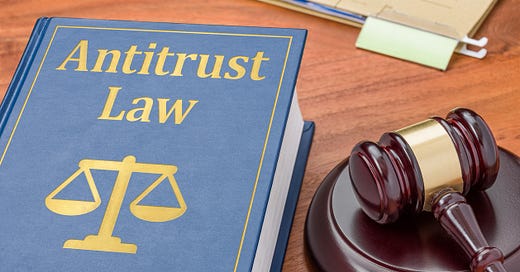Ninth Circuit revives antitrust claims for the commercial real estate market
Having been away for trial prep, I want to kick off my return by talking about the Ninth Circuit’s opinion today in CoStar Group, Inc. v. Commercial Real Estate Exchange, Inc., No. 23-55662 (9th Cir. 2025). This is an antitrust case with some pretty significant rulings.
Key Rulings to Know
Unlike a Section 2 claim under the Sherman Act (monopoly power), a Section 1 claim (exclusive dealing) does not require establishing monopoly power. But a Section 1 claim does require substantial foreclosure of competition, and monopoly power establishes that foreclosure. So, establishing monopoly power for a Section 2 claim also establishes foreclosure of competition under a Section 1 claim.
Unlike a Section 1 claim, a Section 2 monopoly claim does not require an exclusive agreement—but it does require anticompetitive conduct. The existence of an exclusive agreement is an example of anticompetitive conduct required for a Section 2 claim, though. So, establishing an exclusive agreement for Section 1 also establishes anticompetitive conduct for Section 2.
If an antitrust plaintiff alleges supracompetitive pricing, an allegation of reduced output in the market is unnecessary.
Allegations of a “Catch-22” market—i.e., one where you cannot get buyers without sellers, but cannot get sellers without buyers—establish significant barriers to entry in a market, which is indirect evidence of monopoly power.
Facially non-exclusive contracts can be de facto exclusive due to the operation of their terms, giving rise to a Section 1 claim.
Case Summary
CREXi alleged that CoStar—the dominant player in the commercial real estate listings market—engaged in exclusionary conduct to maintain its monopoly and suppress competition. Specifically, CoStar purportedly used restrictive customer contracts that threatened brokers with loss of access or litigation if they shared listings with rival platforms like CREXi. CoStar also deployed technological barriers (like its LoopLink tool) to prevent brokers from posting the same listings elsewhere. CREXi brought suit for monopolization and exclusive dealing under the Sherman Act. The district court dismissed these claims.
On appeal, only two issues were in dispute: (1) whether CoStar has a dangerous probability of achieving monopoly power, and (2) whether CoStar engaged in anticompetitive conduct in pursuit of that power.
With these two principles in mind, the Ninth Circuit held that CREXi had plausibly alleged direct evidence of monopoly power due to CoStar’s supracompetitive pricing. The district court had erroneously held that CREXi lacked monopoly power because there was no allegation about CoStar’s restricted output in the market. But a plaintiff does not need to allege both of these things—restricted output or supracompetitive pricing are sufficient.
Separately, the Ninth Circuit held that CoStar had put forward enough indirect evidence of monopoly power. This included: (1) a 90% share of the commercial real estate listing market, 90% of the information market, and 95% of the auction services market; and (2) there are significant barriers to entry because a new entrant cannot attract sellers unless there are enough buyers, but also cannot attract buyers unless there are enough sellers.
For CREXi’s exclusive dealing claim, the court recognized that CoStar’s contracts were not expressly exclusive, but were de facto exclusive. In particular, if brokers provide data to CoStar, they cannot provide that same data to a competitor. In addition, CoStar erected technological barriers by blocking its competitors from viewing its listings, which is where many brokers exclusively keep their listings. This made it much more expensive for brokers to work with CoStar’s competitors. Together, these allegations established a plausible exclusive dealing claim.
Takeaways
Contract drafters in the Ninth Circuit need to be cautious not to inadvertently trigger a Section 1 claim under the Sherman Act. If your client is working with third-parties, and restricting those third-parties from engaging with other parties—like sharing their data with those other parties—that could potentially trigger an exclusive dealing claim under CoStar.
The Catch-22 market ruling is very interesting. It seems to me that many markets potentially operate in this Catch-22 way, giving a significant advantage to first movers. For example, social media markets. New social media platforms cannot get users to join unless other users join, but those users won’t join until other users join—and so on. But, obviously, some new social media players emerge (see TikTok). So, the Catch-22 isn’t dispositive, but the Ninth Circuit has now made clear that it’s worth some weight for indirect evidence of monopoly power.




